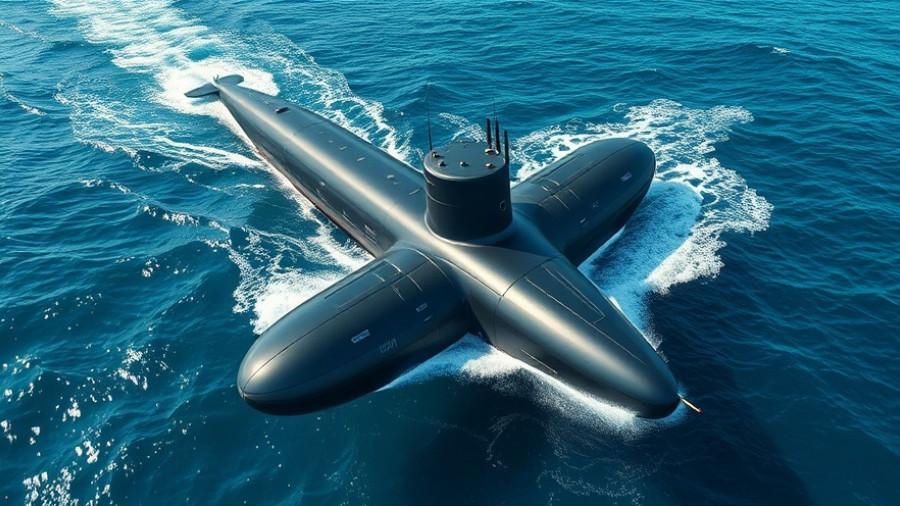
The Future of Naval Warfare: Next-Generation Destroyers
The U.S. Navy is gearing up for a transformative leap in its naval capabilities with the development of the next-generation destroyer, known as the DDG(X). This advanced vessel is set to revolutionize naval warfare with its integration of more missiles and the pioneering use of directed energy weapons. With a proposed fiscal 2026 budget request of $133.5 million dedicated to research and development, the Navy is committed to bringing this new class of ship into service by the early 2030s.
What Sets the DDG(X) Apart?
The DDG(X) is not just a larger version of its predecessors; it represents a strategic shift in naval architecture. Current designs will see the destroyer’s displacement increase to 14,500 tons—an elevation of 1,000 tons from earlier plans. This expansion raises questions about how effectively the Navy can balance increasing power with its goal of a more modern fleet populated largely by smaller vessels.
Among its most compelling features are 96 Vertical Launch System (VLS) cells, vastly improving the ship's missile capacity and allowing for the strategic replacement of some cells with advanced missile launch technologies. The Navy plans for enhanced performance in diverse combat scenarios, ensuring the DDG(X) can stand the test of time against increasingly sophisticated aerial and maritime threats.
Revolutionizing Defense with Directed Energy Weapons
One of the most exciting advancements in the DDG(X) design is its ability to support directed energy weapons (DEWs). These high-tech systems can deliver laser beams, microwaves, or particle beams to disrupt or destroy targets. DEWs not only offer precise engagement options but also reduce the logistical burden associated with traditional munitions.
As the Department of Defense continues to seek innovative solutions to modern warfare challenges, the DDG(X) can be instrumental in positioning the U.S. Navy as a leader in deploying next-generation weaponry.
Mitigating Risks and Challenges in Design
However, as exciting as these developments are, there are inherent risks and challenges. The shift to larger, more complex vessels could drive costs up, possibly hinder the Navy’s goal of a leaner fleet, and lead to logistical dilemmas. Critics of the increased size argue that a heavier displacement may counteract the Navy's plans for speed, maneuverability, and cost-effectiveness.
The Navy's decision to phase out older vessels like the Ticonderoga-class cruisers and Arleigh Burke-class destroyers further complicates matters. Maintained for decades due to their robustness, retiring these ships poses a significant operational gap during the transition to the newer DDG(X) class.
The Strategic Importance of Upgraded Combat Systems
The DDG(X) will leverage elements of the Aegis Combat System, boasting capabilities vital for countering advanced air and surface threats. As maritime security challenges intensify globally, moving toward a fleet of destroyers with integrated combat systems reflects the Navy's adaptation to new realities. By upgrading to a system employing a reduced noise signature, the DDG(X) will allow for stealthier operations, providing an edge against adversaries.
Conclusion: Shifting Paradigms in Naval Warfare
The development of the DDG(X) epitomizes a significant paradigm shift in how the U.S. Navy will approach future naval engagements. The balance between increased destructive capacity and the strategic imperative to maintain a modernized fleet will be critical. As we look ahead, understanding these advancements will be essential for grasping the implications for naval operations and broader military strategy.
 Add Row
Add Row  Add
Add 




Write A Comment